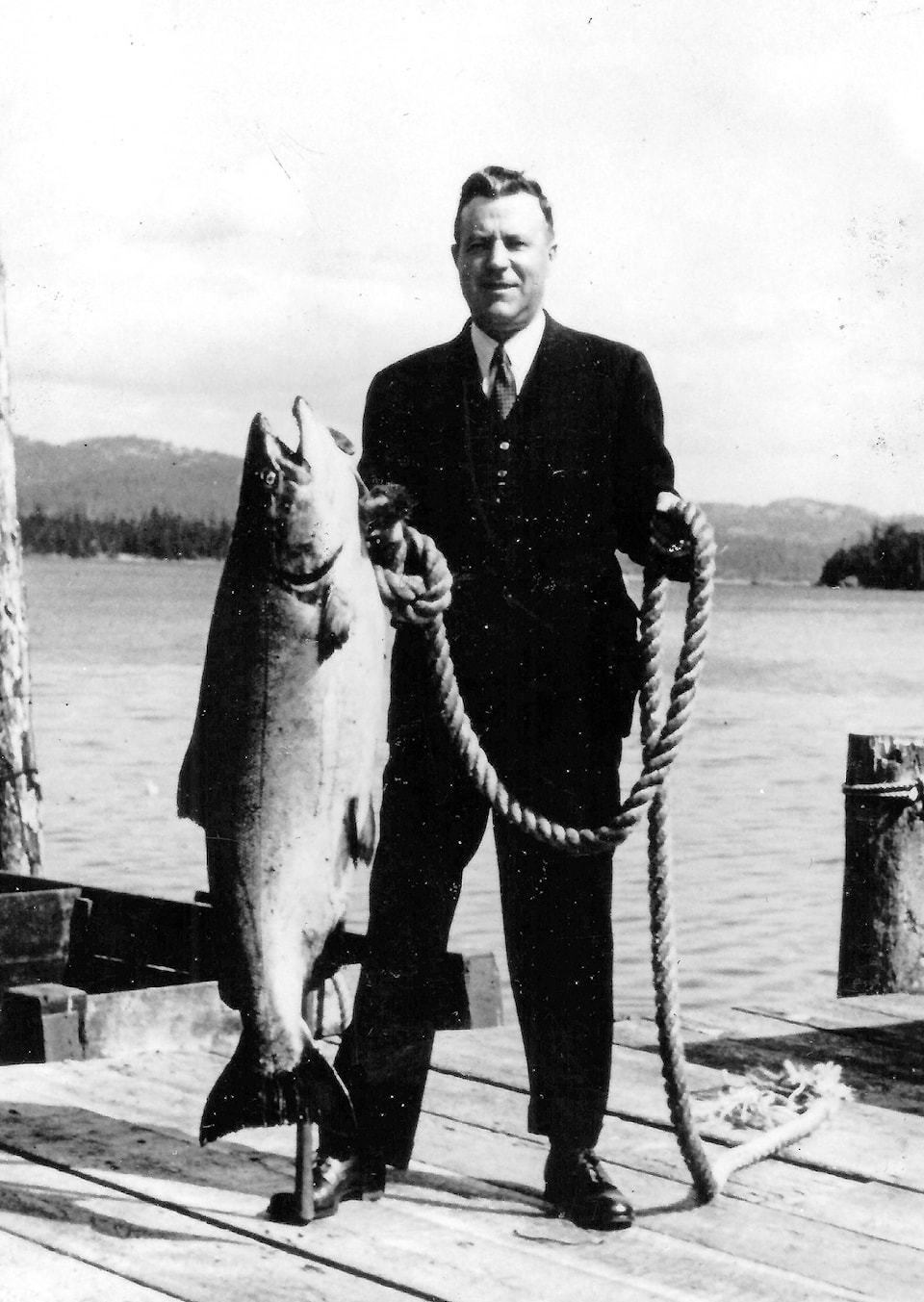Elida Peers || Contributed
Photographed at the wharf at the foot of Maple Avenue in 1936, B.C. Provincial Police Insp. Bob Owens demonstrates the advantages of having Sooke as part of his turf. Ranking as one of the two most consistent of our resources through the years, fishing continues to draw enormous interest to our region.
First of course it was the annual salmon run that attracted the T’Sou-kes to make their homes here at the river mouth. The salmon run to the Sooke River was so abundant and sought after, that battles were fought for the territory. Salmon has traditionally been the prized mainstay of the T’Sou-ke Peoples, and this continues to be true today.
When the Hudson’s Bay Company first made inroads here, in the 19th century, they began the practice of harvesting salmon and shipping out barrels of fish layered in brine.
In 1904, it was the advent of the fishtraps industry that brought enormous change, as various firms, led by J.H. Todd & Sons, drove fir pilings extending from shore out into the Strait of Juan de Fuca to intercept salmon on their way to spawn.
The pilings were strung with a fence of webbing which not only stopped the progress of the fish, but drew them along an intricate maze into “the pot” from which there was no escape.
Packers made their runs out to the traps and lifted or brailed the salmon into the hold of the packer, with ice. The next stop for the packer would be the canneries, and before long, canned sockeye salmon distributed by J.H. Todd and Sons became known throughout the world.
When war came in 1939, there was an impact on the fishing industry as well. In one way, it went like this: when our soldiers returned from serving overseas, they were anxious to set up their own independence, and before long their seiners and trollers and gillnetters overtook the monopoly of the fishtraps industry. From the 1950s through the 1980s it was commercial fishboats that ruled the waves.
Meanwhile fishers experienced ever-lessening salmon stocks and ever-increasing Department of Fisheries and Oceans restrictions. While local folk had always gone out fishing to stock their larders, by the 1980s, as the affluence of the general population grew, we began experiencing a phenomenon new to our local waters. Sportsmen began coming to visit here from all over the world, eager to part with hundreds of dollars for a trip out into the waters off our rugged coastline to reel in their own salmon.
One can imagine that today BCPP Inspector Bob Owens might have been first in line.
•••
Elida Peers is the historian of the Sooke Region Museum.
